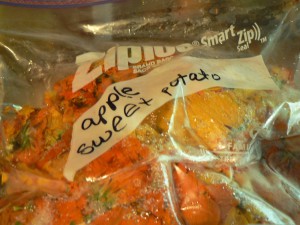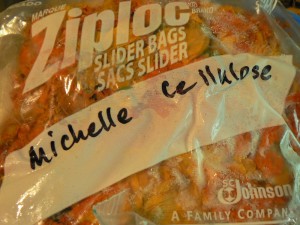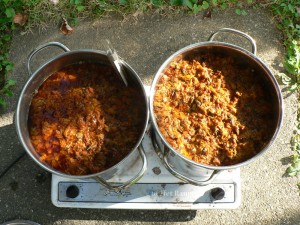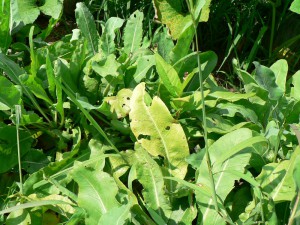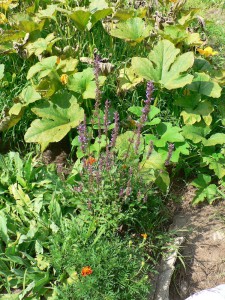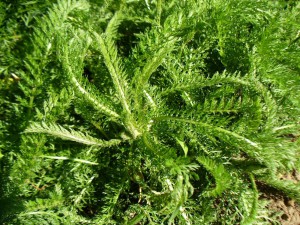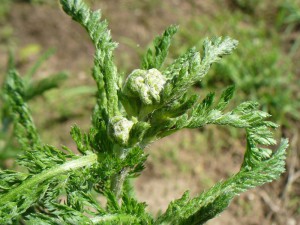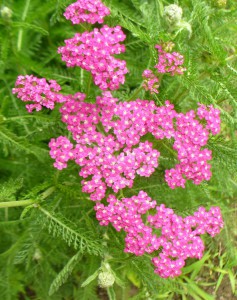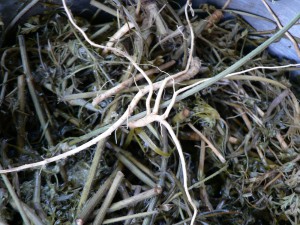Once again, thanks to a snow day on Tuesday, I have made more progress on my new rya this week than I might have otherwise. Nevertheless, it is posing many challenges. The design is supposed to resemble an egg in a nest (Matthew’s idea–Thanks, Matthew!). Specifically, I’m thinking of a wood thrush egg, which is a very beloved bird to me. My colors are shades of tan and brown, dyed with black walnut, and blue-green for the egg, dyed with Queen Anne’s Lace and woad. Wood thrushes like to incorporate white material into their nests, so there is a very light colored layer around the outside of my design. Continue reading “Nest Rya”
Re-Weaving the Rya
Thanks to a snow day on Friday February 8th, courtesy of winter storm Nemo, I got a lot of weaving done on my rya. I was well past the mid-way point by mid-day on Saturday. However, I decided I wasn’t satisfied with the transition from green to celedon to yellow at the center. In the process of redesigning this transition, I decided to make the whole design taller, i.e., more square. I wasn’t looking forward to all the extra work of re-weaving, but I decided I’d rather have a piece I was happy with. Continue reading “Re-Weaving the Rya”
Rya Weaving
After about two years of planning a series of naturally dyed rya wall-hangings in my mind, I am finally weaving one! I am very excited about it. There are many steps involved. First, I dyed pounds and pounds of woolen yarn. You can read about the process in earlier posts: black walnut, Lady’s bedstraw, Queen Anne’s Lace and woad, and orange cosmos. This project features Queen Anne’s Lace and woad.
Then, I set up the warp. It is 8/4 natural linen from Webs,124 ends, a little shy of 21 inches wide in the reed, set at 6 ends per inch in a 12 dent reed, sleyed 1-0-1-0-1- etc.. When it’s done I expect it will be about 14 inches high. Continue reading “Rya Weaving”
Orange Cosmos (Cosmos sulphureus)
At this time of year there are a lot of things to harvest, including dye plants. Some things can be strung up to dry, such as marigold blossoms. Other things, such as orange cosmos flowers, I store in the freezer. When the first cosmos were ready to pick a few weeks ago, I realized that our freezer was still full of bags of cosmos I froze last summer! So on September 1st I decided I’d better make some room. Cosmos are easy to distinguish from pesto, ginger, and the other non-commercial items in our freezer, which is lucky because I had re-used zip-lock bags last summer and you can see that the labels weren’t helpful.
This is not good practice. Label your bags accurately! It is probably also not good practice to store food and non-food things in the same freezer, but we only have one freezer so that’s how it is.
I made a very strong dyebath using 5 lb. of frozen orange cosmos flowers. Since my pots are pretty small, I divided the quantity between two 2-gallon pots, and ran two baths simultaneously.
Orange cosmos are pH sensitive, and you get much redder colors if the pH is high. After straining out the flowers, I used ammonia to increase the pH. I have run out of pH test strips at the moment so I can’t tell you exactly what it was. In the initial dyebaths I added 4 Tbs. ammonia per pot (about one and a half gallons of liquid) before adding the yarn. For each subsequent exhaust bath I added 2 Tbs. ammonia. The yarn is 4 ply rug wool (Helsingin Villakehraamo from Finland, bought at the Hill Institute a few years ago), premordanted with aluminum sulfate.
Another Woad Vat
Yesterday I picked 8 and a half pounds of woad leaves. This is a lot, probably the largest quantity I’ve harvested at one time. Many of the leaves are droopy and yellow at this point in the summer. It has been hot and dry, but there is a lot of color in them, so no worries.
I had written earlier in the summer about woad’s enemies. To fend off the cabbage whites, I planted two hyssop plants, which are supposed to help. I could only find anise hyssop, which may or may not be the right type. It definitely attracts the adult butterflies, as a food source I suspect. But I’m not sure it keeps them from laying eggs on the woad, and it’s the caterpillars that eat the woad leaves, not the butterflies.
I think at this point in the summer that slugs are the main predator on the woad, but I did find quite a few cabbage white eggs. The hyssop is very pretty, though, and it smells great, and the woad is doing OK, so even if the cabbage whites are still laying eggs on it, I guess it’s all fine. Continue reading “Another Woad Vat”
Yarrow (Achillea)
I recently heard a little rhyme about the growth habits of perennials that I couldn’t believe I had never heard before: Sleep, creep, leap. This year my yarrow finally got to the “leap” stage. Yarrow, of course, grows wild all over the place and there isn’t necessarily any need to cultivate it. I have only seen it as a white-blooming wildflower (Achillea millefolium, I believe) which sometimes has a purplish or pinkish tinge. It is beautifully frothy and creamy looking. But I do cultivate it because it comes in such beautiful colors, and I have tried several varieties in the garden over the years. For some reason, the red, yellow, and orange ones have not survived, but this year my pink-flowering ones were lush and tall and bloomed in abundance.
Here is a young little yarrow plant early in the spring. It is feathery and burly at the same time. It looks a little bit like Queen Anne’s Lace when it’s young, and they often grow in similar places. But yarrow is fuzzier, almost furry, and more dense.
Here are some buds. At this stage it can look velvety and fuzzy and silvery grey.
This is what my pink-flowering type looks like in full bloom. It’s cheery, and I find it kind of humorous. The shade of pink is so bright that it entirely over-rides the feathery, lacy quality of the foliage. Continue reading “Yarrow (Achillea)”
More Queen Anne’s Lace
Since Queen Anne’s Lace has been so abundant this year, I wanted to experiment with using the entire plant, roots and all, for dyeing. Quite a lot of plants needed to be weeded out of our garden plot, so on August 2nd I decided to try it. I was pretty certain it would make yellow, which is the most common color from wildflowers, but you never know until you try.
When I am dyeing, I often think of Jill Goodwin’s summary of her dyeing philosophy in her introduction to A Dyer’s Manual (12/24/2023 Edited to add that this link no longer works so I deleted it). I find two of her points especially comforting and motivational:
- “Only use the results of other people as a rough guide, for their conditions will not be the same as your own. Prove everything by your own efforts.”
- “Persevere with each problem, for sometimes after years of thought the solution will become clear.”
So, I do try to prove everything with my own efforts. And I try to persevere with each problem. Hopefully over the years I solve some of them.
I pulled up many plants and chopped them up with pruning shears. I got 4 lbs. 8 oz. of plant material. I liked the cauldron-esque look of the dye pots with stems, leaves, flowers, and especially the roots. Whereas the flowers alone smell lemony and sweet while they are simmering, the whole plant smells a bit more like carrots, as you might imagine. Lemony carrots. Continue reading “More Queen Anne’s Lace”
Woad is Glorious
My woad beds are looking fantastic! I am very pleased about this. For the past couple summers, the woad plants at Amethyst Brook have been small and feeble compared to the woad I grew up at the dye- and fiber-plant garden at Bramble Hill Farm. This year the garden at Bramble Hill has been sadly neglected (well, I’ve been distracted by multiple flax plots), so the community garden is my sole source of woad. Consequently, I made an extra effort to add plenty of composted manure before planting this year. And ta-da, success. Here is one bed before I weeded it the other day:

